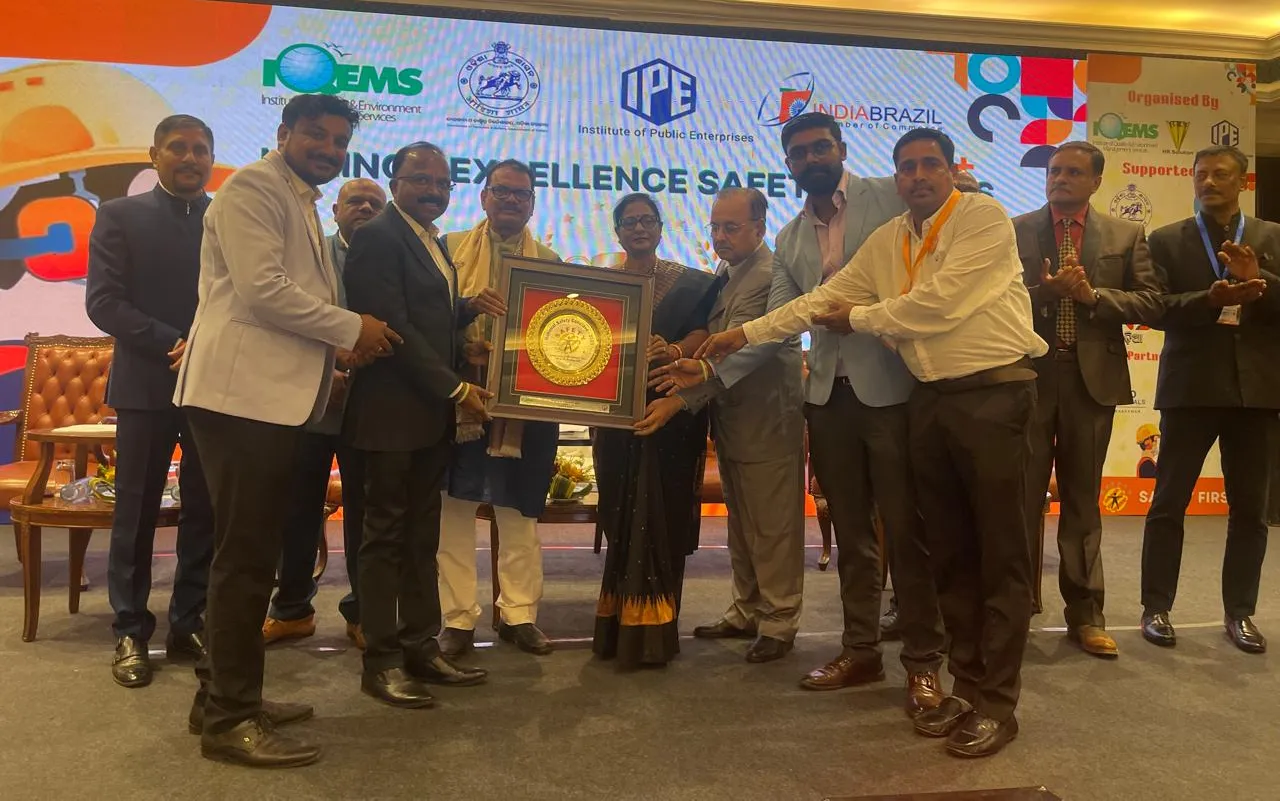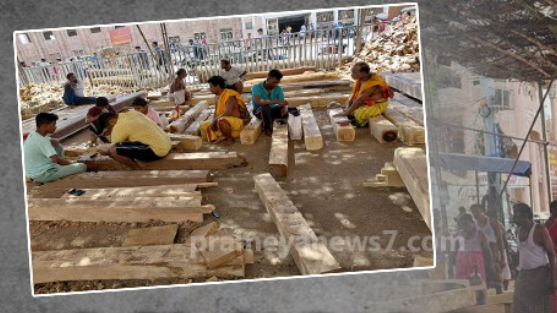

Puri, May 22: As the sacred city of Puri hums with anticipation for the grand Rath Yatra, an age-old tradition quietly thrives in the heart of the Rath Khala , where chariots for Lord Jagannath, Lord Balabhadra, and Devi Subhadra are lovingly crafted each year. Amid the clang of chisels and the rhythm of wooden mallets, a new generation is stepping into an ancient role, young sculptors, some barely old enough to hold a tool, are now shaping the future of a centuries-old legacy.
At first glance, the Rath Khala seems unchanged, seasoned Vishwakarma artisans, blacksmiths, potters, and painters work in harmony to build the majestic chariots. But look closer, and you’ll find a quiet revolution unfolding: children, guided by their fathers, grandfathers, and even great-grandfathers, are carving, polishing, and painting under watchful eyes.
Their tools are modest, hammers, chisels, and carving knives, but their task is monumental: to keep alive a heritage that is not taught in classrooms but passed down through touch, repetition, and reverence. These little sculptors sit cross-legged beside their elders, learning to carve mythical creatures, floral patterns, and intricate divine motifs, the signature embellishments that define the chariots’ grandeur.
For many of these young artisans, this isn’t just a summer activity. It’s a calling, rooted deep in bloodlines and spiritual duty. “We started the same way,” says one elder sculptor, watching his grandson carefully chisel a panel. “Our fathers taught us with love and patience, and now we teach them.”
The Rath Khala has transformed into more than just a workspace; it is now a living classroom, echoing with tales of past processions and whispered blessings from generations who once did the same work in the same space. Each carving, each wooden beam, is not just a piece of the chariot — it’s a chapter in a long story of devotion and craftsmanship.
The involvement of these young hands is also a safeguard against the erosion of traditional knowledge. In a time when modernity threatens to overshadow heritage, their presence ensures that the divine artistry of chariot-making will not fade into memory. Instead, it will be carried forward, one carving at a time.
At just 5 years old, Jigyanshu is not like most children his age. While others might be lost in games or cartoons, he is already immersed in the intricate and sacred work of preparing for the grand Rath Yatra. A student of Class 5, Jigyanshu proudly says, “I started working here when I was only five. This is our love and devotion for Lord Jagannath.”
Each day, he spends his daytime hours at the Rath Khala—the sacred workshop where the massive chariots for Lord Jagannath, Balabhadra, and Subhadra are built. After a long day of work, he returns home to continue his studies late into the evening. “Before starting work, I wash my hands and legs and offer a prayer to the Lord,” he shares with quiet reverence.
Even younger is one-year-old Omprakash Mohapatra, seen enthusiastically mimicking the actions of seasoned craftsmen around him. While too young to understand the full significance of his presence, his dedication is inspired by family legacy. “My father and grandfather also began learning this craft when they were just five,” he says, as if following an inherited tradition. “I feel proud and lucky to be working for the Lord.”
Despite their young age, both Jigyanshu and Omprakash strike a balance between devotion and discipline—carrying forward an age-old tradition with a maturity far beyond their years. Their evenings are reserved not for play, but for study—ensuring that devotion never overshadows education.
For these children, the chance to contribute to the Rath Yatra is more than a cultural ritual, it’s an honor, a joy, and a mark of identity. As they dust off the shavings and glance up at the towering frames taking shape before them, they don’t just see wood and nails. They see themselves, woven into the sacred journey of Lord Jagannath.
In every strike of their mallet and sweep of their chisel, they are not only building chariots, they are building history.